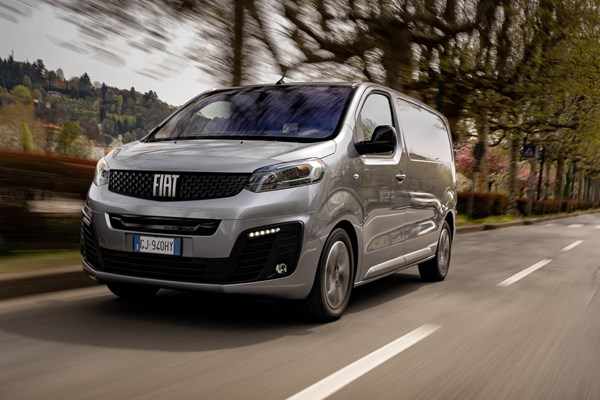Fiat E-Scudo electric van review (2023)
E-Scudo adds fifth identity to a highly capable electric van
PROS
- Competitive payload
- Pleasant to drive
- Low running costs
- Generous equipment
- Impressive maximum range
CONS
- Slightly cramped cabin
- Diesel carries more weight
- Can't tow like a diesel
- Expensive against diesel versions
- Faster 11kWh charging is optional
Summary
The Fiat Talento's replacement – the Scudo – has a 100% battery electric option as well in the form of the 2023 Fiat E-Scudo. This shouldn't be a surprise; Fiat is part of Stellantis, and where this design is offered by other brands in the group it is one of the most convincing electric vans yet.
Even so, that means that buyers looking for a 1.0-tonne electric van are simultaneously spoiled for choice, with Fiat Professional joining Peugeot, Citroen, Toyota, and Vauxhall LCV dealers in having just the van for you, and it being, in essence, the same van from all five marques.
While it looks like this leaves you with few options, there are big differences in the dealer network and support on offer, both in the UK and in Europe. Although the E-Scudo closely resembles the Vivaro-e (and may even be built in Luton, for sale both in the UK and overseas) the dealer network is backed by sister brand Iveco's service centres.

That means the sort of service tailored for mission-critical HGVs, lavish high-end motorhomes, and rugged hard-working LCVs. Which sums up Fiat's unique selling point and brand proposition in this fleet of clones; a car-like electric van that has the backup of a high-value logistics support network.
E-Scudo variety
You can get the E-Scudo in two wheelbases as a van or crew cab, or a short wheelbase chassis cab, with a choice of 50kWh or 75kWh battery. There are three trim levels: SX, Technico and Business, but the SX level is only offered on the chassis cab.
Payloads range from 1,000kg to 1,226kg depending on wheelbase and battery pack fitted for the panel vans, while the crew cab dips to 987kg for the LWB 75kWh version.
Part of a wider range
The Fiat E-Scudo is, as mentioned above, part of a multi-brand approach to offer fundamentally the same vehicle across a broad range of countries, each of which may have strong historical loyalty to a locally-produced marque as well as the individual tastes of buyers.
The only one of the five to offer a significant practical difference is the Toyota Proace Electric, which gets up to 10 years of warranty coverage – enough for it to be given the 2022 Parkers Electric Van of The Year award.
In terms of appearance, the Fiat closely resembles the Vauxhall, but has a bold, uncluttered logo in the grille that's quite attractive, and should blend into company colour schemes well.
Fiat E-Scudo driving range
If you've been researching your next electric van, you're not going to be surprised to find the e-Scudo has a maximum range of 205 miles tested to WLTP standards, and that's with the 75kWh battery. The 50kWh option delivers 143 miles on the same basis.
Weight and weather conditions, particularly ambient temperature, impact the distance you can cover, but on paper this is one of the best electric vans you can buy for longer-distance operations, regardless of badge.
Recharging solutions
No surprises here, but that means the tech is much as it was when this family of vans was first introduced. You get Type 2 AC charging at 7.4kW (11kW for faster AC charging is an option), and Type 3 DC charging at 100kW. Both Type 2 and Type 3 cables are provided, but you don't get one suitable for a domestic three-pin socket included with the van.
With access to fast DC charging you can get the 75kWh battery to 80% in 45 minutes, but the solutions you're likely to have available for installation as a wallbox will take much longer.
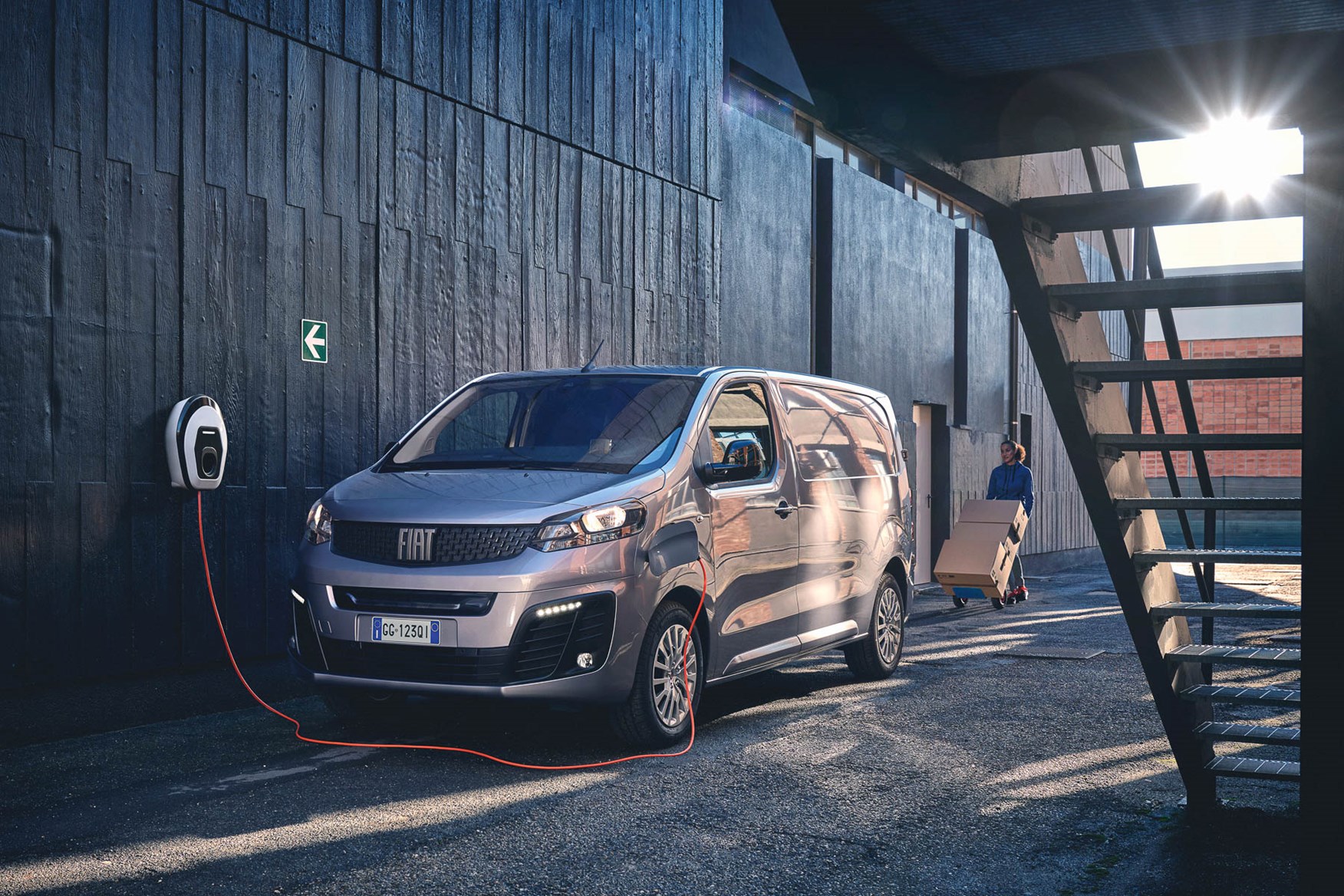
Using a 7.4kW charger you can recharge overnight, and in an emergency a 13A Type 2 cable will add about six miles per hour of charging for around 36 hours for a full charge.
Practicality and payload
To carry the heaviest items, you want the smallest van with the smallest battery. The short wheelbase E-Scudo 50kWh can carry 1,226kg in a 5.3 cubic metre space. Go for the long wheelbase and you've got 6.1 cubic metres to cram up to 1,000kg of stuff into.
The E-Scudo can't tow as much as the diesel, being limited to 1,000kg, but it can tow. Not all electric vehicles offer that.
E-Scudo rivals
As this is in essence the best electric van in this class already, the main rival for the E-Scudo is one of its badge-engineered clones. Of those, the Toyota Proace Electric is the one that offers a tangible benefit in the form of a 10-year warranty.
You can get a Mercedes eVito or a Volkswagen ABT e-Transporter while stocks last, but these are aftermarket conversions and have considerably shorter range, lower payloads and higher costs.
However, the Volkswagen ID. Buzz may offer something compact and of similar performance, and you can always consider the Ford Transit Custom Plug-In Hybrid, or the LEVC VN5. If cargo space isn't your main priority you could also consider the Maxus e Deliver 3.
A hydrogen future?
Unsurprisingly there are plans for a hydrogen version of the E-Scudo. There are already Opel-badged versions of the hydrogen fuel cell van available in some locations, and UK fleets will be be able to order versions soon. Conveniently the diesel's fuel filler flap has been retained on the electric model – in addition to the charging flap on the front wing, making the hydrogen installation very tidy.
Verdict: is the Fiat E-Scudo electric van any good?
Keep reading our full Fiat E-Scudo review to find out more about the driving experience and running costs.
Some drivers may find the cab slightly cramped, as it compromises between car and van ergonomics, but there's no denying the competence of this electric van regardless of the badge on the front. Fiat has no need to change the recipe for the E-Scudo, and if you have an existing relationship with a Fiat Professional or Iveco dealer you can keep your fleet cohesive and know that you're getting the best solution available for a compact, fully-electric van.
Skip to our full verdict on...
- Effortless torque, and very refined
- Automatic transmission and light steering
- Handles well
If you've had a Fiat fleet for a while and are looking for the next generation, you won't regret boldly going for the E-Scudo. When the original Eurovan family was developed Fiat was crucial to the project, and after a short distraction in the form of the Renault-based Talento it's back in the fold.
Designed for electric power right from the start, the E-Scudo is a thoroughly modern van that feels cohesive and capable.
What powers the E-Scudo?
Driving the front wheels, there's a 100kW electric motor. Equivalent to 136hp, it's more powerful than the entry-level diesel and offers a useful 260Nm of torque. There's no clutch, no complex gearbox, and no combustion cycle to smooth out so the end result is stronger, quieter and simpler than any traditional diesel, and it's got the potential to be very long-lived.
Better yet, that torque is delivered almost instantly, and the van is brisk off the line and up to urban speeds, yet immensely easy relaxing for the driver.

It offers three driving modes – Normal, Eco and Sport – to tailor response and range. Ultimately even in power mode, if you accelerate and drive at the same speed you can in Eco mode the range is pretty much the same.
What’s the E-Scudo like to drive?
Responsive, and well behaved. You can, if you wish, race away from the lights rather dramatically, but you can also tip-toe around pedestrianised precincts with absolute precision, a gentle electronic hum alerting people to your presence. Without clutch or gears, once you've become accustomed to the E-Scudo you won't want those traditional controls back.
A limiter keeps it below 81mph, and it'll reach 60mph rapidly if needed. Compared to a diesel van it's another world, a very quiet one.
What are the driving modes for?
Fiat hasn't altered the programmes for the driving modes, so this is familiar territory. The three driving modes are very distinct, and place limits on power output to prevent you aggressively wasting range with the sort of habitual accelerator movements you end up learning with a diesel.
Normal mode is a practical blend of performance and efficiency. Restricting the motor to 80kW, equivalent to 109hp, this setting is about the same as driving a typical smaller diesel. Strong initial response means you’ll only really notice the difference between Sport and Normal mode if you drive flat-out all the time.
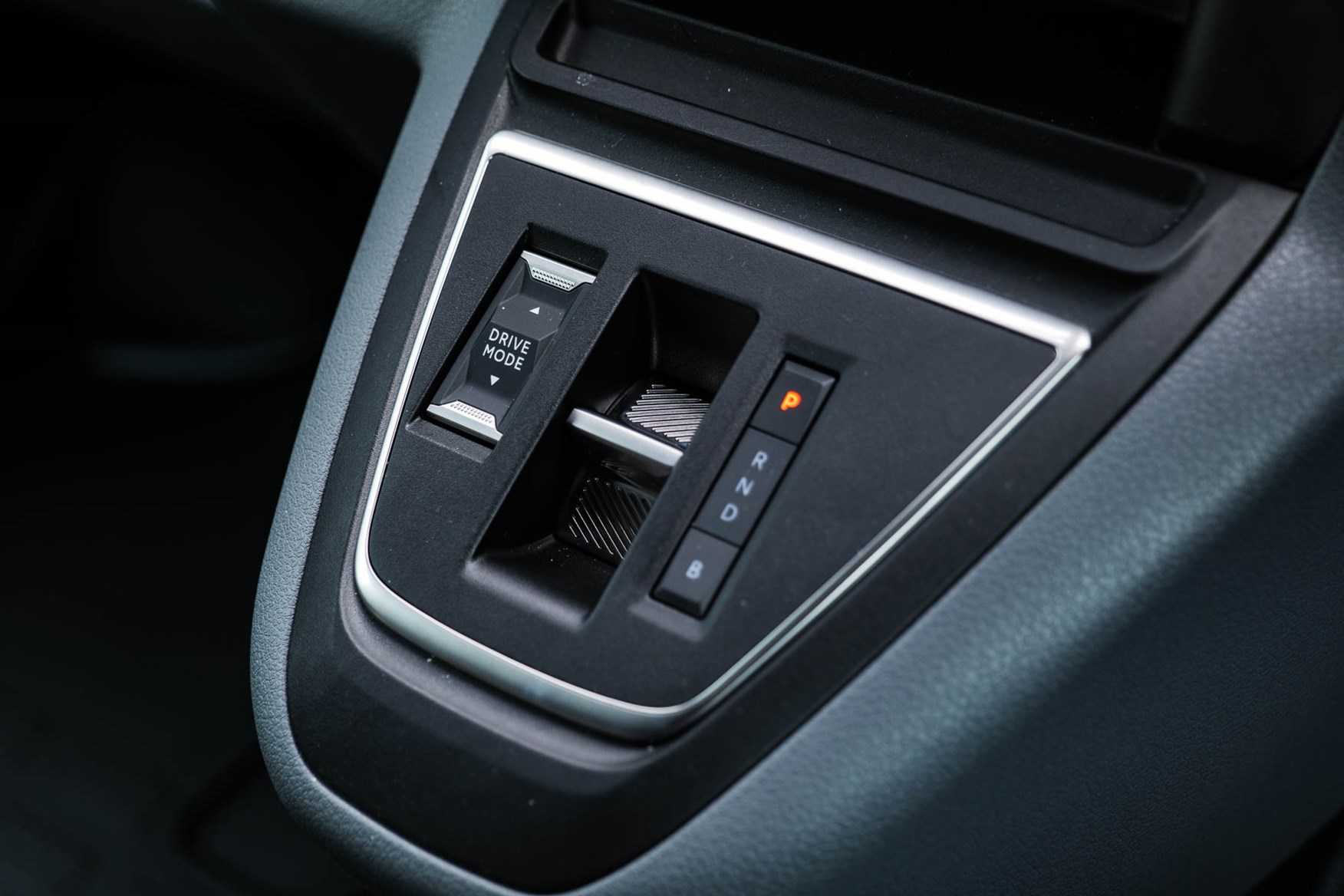
There's more to the Eco mode. It holds the motor back to 60kW (81.5hp) and reduces the power consumption of air-conditioning and other accessories in order to extend the range. If you're anxious about how much charge you have left, flicking Eco mode on will usually add a reassuring extra few miles to the digital dashboard remaining range display.
It might feel a bit sluggish with a full load in this mode, but it's still quick enough for normal traffic.
If you want your full 136hp, Sport mode unlocks the maximum 100kW. Aside from the drop in predicted range, you can feel the extra power and responsiveness from the pedal. It lends credence to the car-like claims for the E-Scudo as, without the distraction of changing gear, you can enjoy the handling more.
What’s the real-world driving range?
In summer, driven gently, the Fiat E-Scudo can deliver close to the claimed range both in the brochure, and on the dashboard.
Our experience of similar vans is that in cold weather, or driven aggressively, that range can fall very rapidly, though that is partly down to the way the van recalibrates its range estimates as you drive.
We found the related Vivaro-e would adapt its predictions for different driving styles very quickly, so as you become familiar with the E-Scudo and it becomes familiar with you, the remaining range prediction should become more realistic and trustworthy.
You will also find small changes in driving style can have a bigger impact – and more immediate – than with combustion engines.
Activated by a B (for Brake) button on the centre console, the regeneration mode is less versatile than some electric vehicles. It applies some braking effect while charging the battery, saving on brake pads, smoothing deceleration, and overall delivering a gentler driving experience.
It's best switched on below 40mph and in urban environments as every roundabout becomes a chance to recover wasted energy, and disabled on faster roads. However, it is a fixed-rate system so you can't increase the braking effect or use one-pedal driving.
The range does fall in winter, but it's also worth remembering that charging can take longer in cold conditions too. For this reason alone the 75kWh battery may be essential for year-round operation, allowing a good range without being fully charged every time.
- Familiar interior and controls
- Simple forward-reverse switch, no gearlever
- Cab is still relatively small
The E-Scudo - and Scudo - share the same interior as the other vans, aside from the badging. That means a soft-curved and car-like dashboard, a slightly offset driving position, and just changes to the gauges and gear selector to mark it out as electric.
What has changed?
In place of a rev counter there's a power meter. It shows how much energy is being used, gives a hint as to how much energy you can have in your selected driving mode, and how much is going back to the battery when you coast, brake or use cruise control with B-mode on.
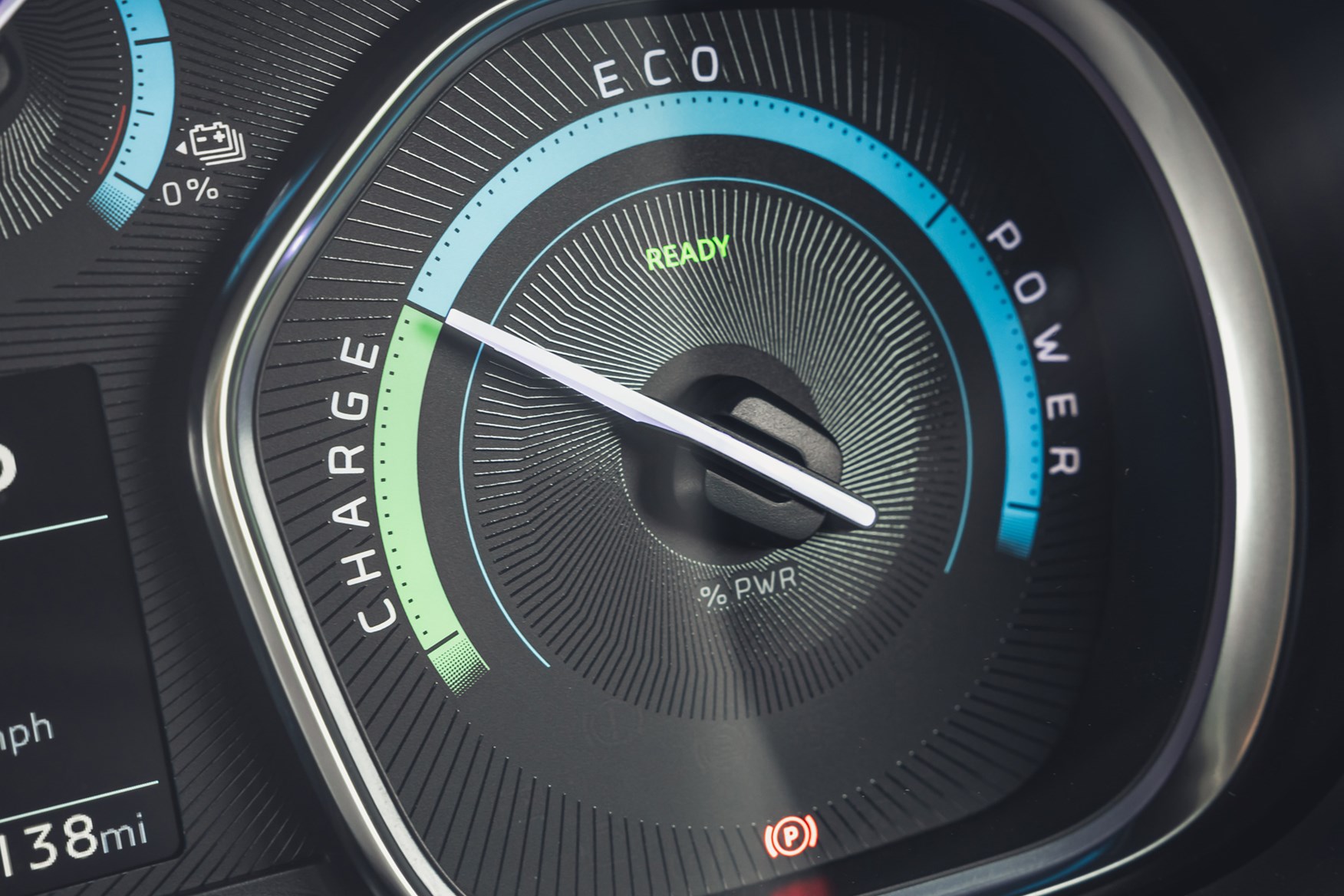
There's no gearlever, just a toggle switch for forward and reverse set into the dashboard next to the buttons for park and B mode. The drive mode selector is on the same panel, so intuitive to reach for.
You can select an energy flow display on the touchscreen, which gives a graphic representation of the battery and motor.
Is the cabin that small?
This family of vans is based on a car platform, and it shows in how compact the cab is. It's not uncomfortably cramped, but if you're used to stretching out and scattering things everywhere in a lorry-like environment this is more cosy.
There's a reasonable amount of storage, but the door bins are adequate rather than cavernous, and some drivers may find the steering wheel, pedals and seat slightly offset, giving a twisted driving position. Our testers have mixed feelings about how much of an impact this has, but it suggests that 'one size does not fit all'.
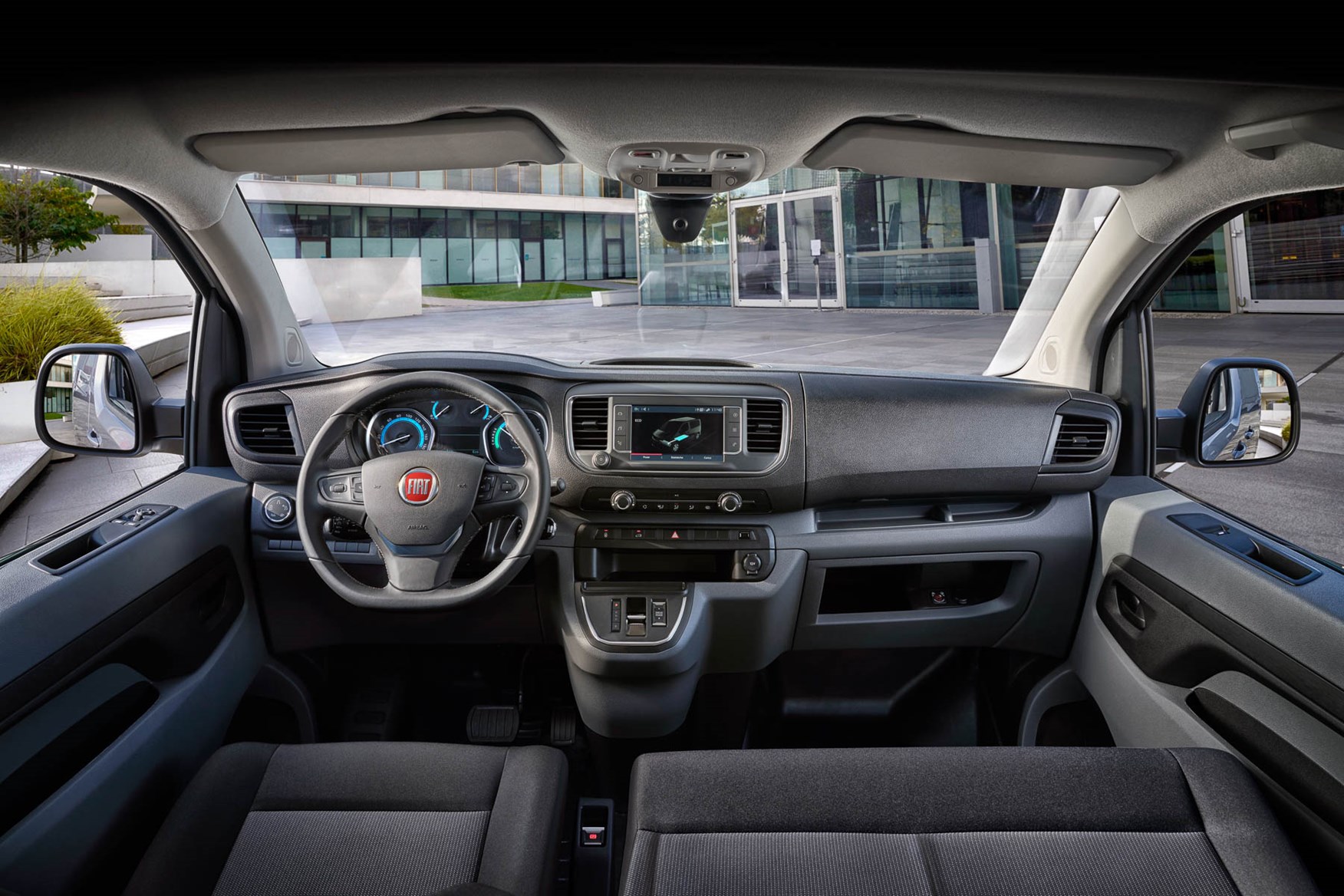
It's not an E-Scudo feature - all five brands, diesel or electric, share this trait. You should take time for more than just a quick sit in the showroom to make sure it's comfortable for you or your drivers.
- Total cost of ownership comparable to diesel
- Battery warranty of eight years, three for the whole van
- Well equipped overall
Even as energy prices fluctuate electricity remains the most cost-effective solution per mile, and depending on your distances and charging infrastructure the additional premium of an electric vehicle of any kind usually fits into the budget needed to run a diesel equivalent. That's ignoring the benefits of zero emissions and any PR, personal ethics or local business incentives that may be in place, too.
The only time you may find electricity more expensive than diesel – and less convenient – is at higher-speed public chargers. If you're investing in a fleet of electric vans then factoring in the cost of on-site charging and availability is an inevitable burden, but one that gives you control over your fuel supply even in the event of shortages at the pumps.
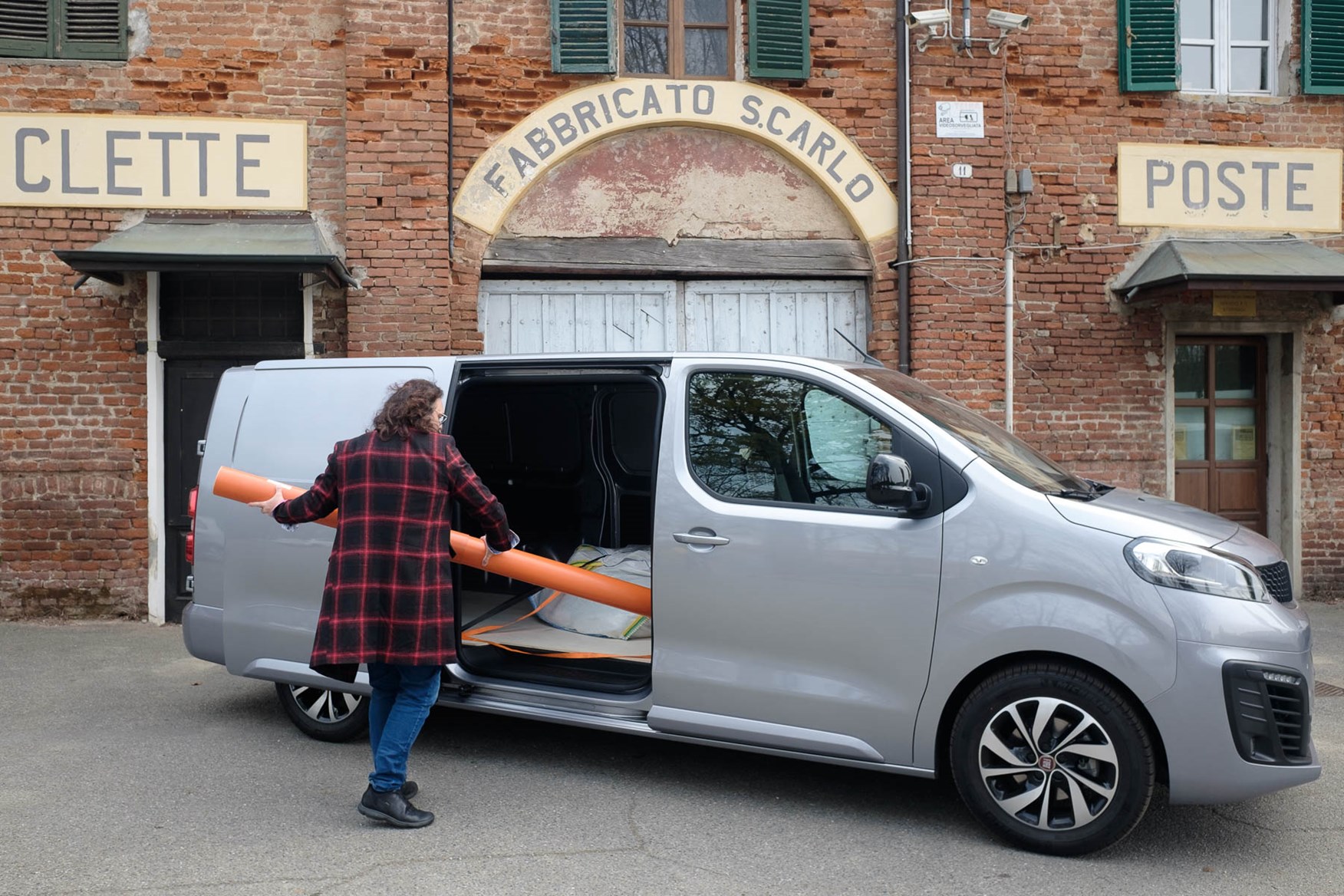
Convenience is evolving for electric vans, and the traditional 'charge overnight on cheap electricity' approach has complementary tech in development, such as wireless charging pads that could top up a battery while loading. It's early days, but trials are underway.
Electric vehicles attract a lower burden of tax as well, both as a personal benefit and as a business asset and tool.
Fiat E-Scudo service intervals
Thanks to fewer moving parts to wear and fluids and filters to change, the Fiat E-Scudo should be very easy to maintain. Regenerative braking even ensures pads and discs last longer, and less soot and oil means fewer contaminants on bodywork and trim.
For warranty and making sure everything is in good order, servicing intervals are 25,000 miles or two years, whichever is sooner. The first service is still required at one year or 12,500 miles.
Fiat E-Scudo warranty
Fiat provide a three-year / 100,000-mile warranty, with extended cover for the battery components up to eight-years / 100,000-mile warranty.
Standard equipment
The E-Scudo comes in a choice of three trim levels: SX, Technico and Business. However, the SX level is only offered on the chassis-cab model.
Fiat E-Scudo Tecnico standard equipment highlights:
- Twin sliding side doors
- Moduwork load-through bulkhead
- Cruise control and speed limiter
- Six-way adjustable driver’s seat
- Dual front passenger seat
- Automatic lights and wipers
- Rear parking sensors
- 7.0-inch touchscreen infotainment system
- Electric, heated door mirrors
- Alarm
Fiat E-Scudo Business standard equipment highlights (in addition to Tecnico):
- Satellite-navigation
- Head-up display
- Lane-departure warning
- Blindspot monitors
- Autonomous emergency braking
- Front parking sensors
- Reversing camera
- 17-inch alloy wheels
- Metallic paint
Double cab crew vans are available as both SWB and LWB, in Tecnico or Business specification.
The van that the E-Scudo is based on has a fair number of official recalls, though these could just as easily indicate that any issues discovered are being very proactively addressed.
Although the E-Scudo is new, it has identical versions that have been on sale for long enough that any problems with the electric powertrain would have become well known, and so far, those vans have been reliable. Stellantis uses the same motor and battery tech across thousands of electric vehicles, so the technology is being proven in more than just one van design.
- Lots of safety kit on the highest-spec models
- Euro NCAP Silver award
- Alarm fitted as standard
Unsurprisingly, the Business spec carries the best safety kit.
You'll find the essentials in the Technico – driver’s airbag, electronic stability control (ESC) – but Business comes as standard with modern active safety aids such as autonomous emergency braking (AEB), blindspot monitors and lane-departure warning.
Euro NCAP tested the identical Vauxhall Vivaro when evaluating van safety, earning it a reasonable Silver award, which the Fiat E-Scudo can equally wear with pride.
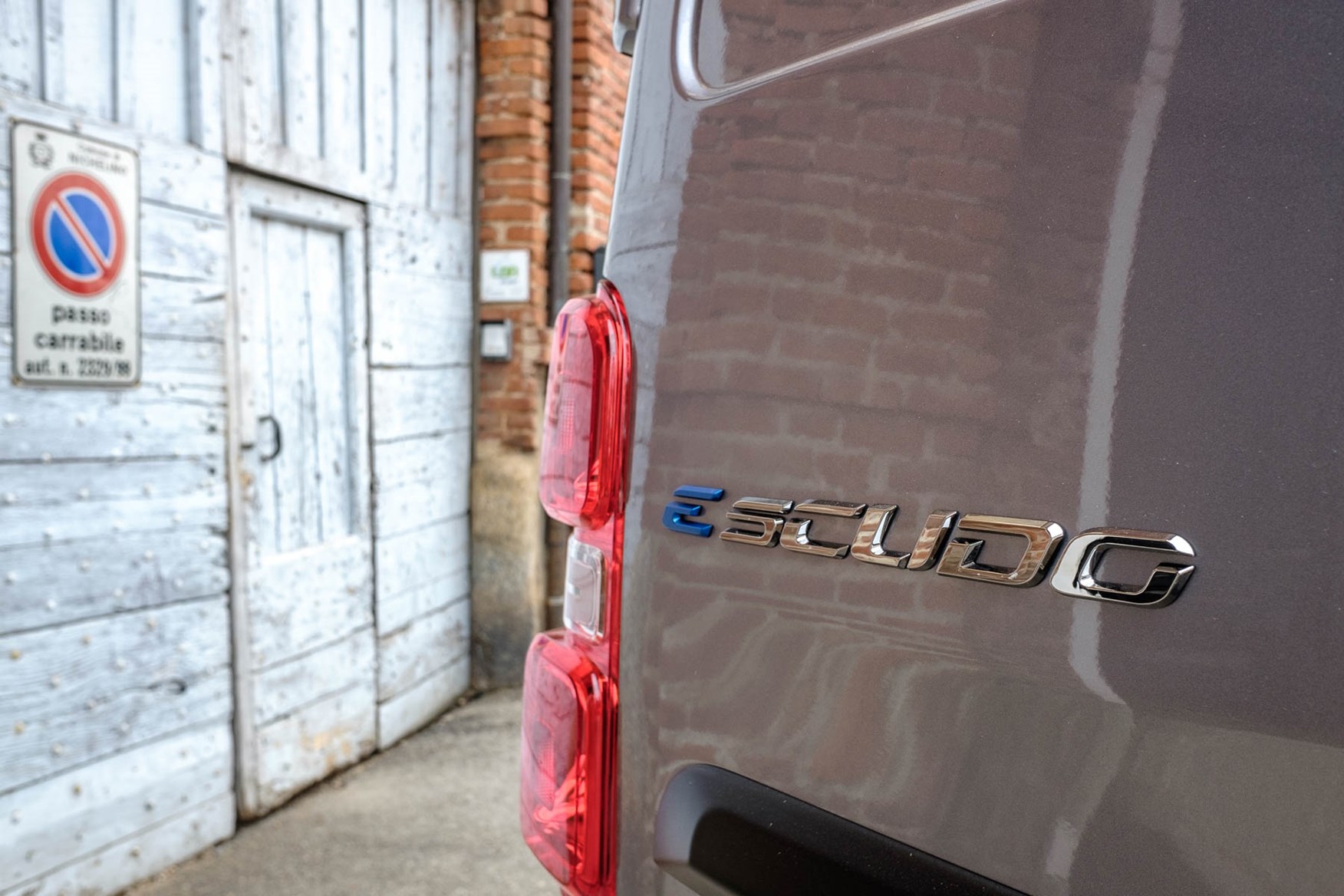
Business models feature a head up display, and there's an optional driver alert camera system.
All versions of the E-Scudo come with an alarm as standard.
Which Fiat Scudo E-Scudo is best for me?
Fiat offers a fairly comprehensive selection of E-Scudo models, so which one you choose will depend on your operating needs in terms of range and payload, It's the smallest one with the smallest battery that can carry the most, but it's worth noting for conversions you can get the chassis cab with either 50kWh or 75kWh batteries if you need bespoke carrying solutions.
If you want a comfortable and modern-feeling van, then choose the E-Scudo Business and enjoy the generous levels of equipment. Gadgets do reduce the payload slightly, though.
Also read:
>> The Parkers guide to electric vans



